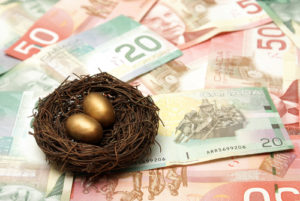 Once you stop working you may want to simplify your investment strategy. Your objective shifts from growing your investment portfolio to generating income. Flat and unpredictable markets, combined with historically low interest rates, can make this a challenging time in terms of creating retirement income.
Once you stop working you may want to simplify your investment strategy. Your objective shifts from growing your investment portfolio to generating income. Flat and unpredictable markets, combined with historically low interest rates, can make this a challenging time in terms of creating retirement income.
With these investments, cash flow is based on the number of units you own, not on the market value of the assets.
In non-registered accounts, the distributions can be more tax efficient than interest earned on GICs and bonds. However, keep in mind that there can also be taxable distributions in December (just as in other mutual funds) in addition to the monthly payout amounts.
Comparison of monthly income funds
Monthly income funds are sold by Canadian banks and mutual fund companies, and are also available in ETF versions.
The following chart is a comparison of some funds sold by Canadian banks as well as two popular ETFs.
| BMO | BNS | CIBC | RBC | TD | BMO(ZMI) | iShares(XTR) | |
| Annual distribution per unit | .29 | .36 | .72 | .51 | .36 | .62 | .60 |
| % yield | 4.10 | 3.29 | 5.92 | 3.61 | 1.77 | 3.86 | 5.28 |
| Exp. ratio (MER) | 1.57 | 1.46 | 1.47 | 1.20 | 1.47 | 0.63 | 0.56 |
| % stock/bond/cash | 52/44 | 51/40/9 | 52/44/5 | 48/49/3 | 60/36/4 | 59/41 | 55/45 |
| 5 yr. return | 6.3 | 5.31 | 3.2 | 4.95 | 5.84 | 5.2 | 4.17 |
| Price | 7.04 | 10.94 | 12.15 | 14.12 | 20.29 | 16.04 | 11.36 |
Investment risk
Historically, payouts have been consistent. However, sustainability of the monthly payout is the top consideration in selecting a monthly income fund, and the amount of the fixed payments can change.
All the above funds have reduced their distributions at least once since 2007. If the distribution isn’t cut, you may just be getting the return of your own capital (ROC).
When funds use ROC to pump up the payments, the fund will start declining in value, and the payments will be cut even more.
Final thoughts
You could replicate this type of income portfolio on your own by choosing some large cap, dividend-paying stocks (such as financial services, utilities, energy and communications) and REITS, and adding a bond ladder.
As always, do your own research for suitability, and thoroughly read any prospectus of the fund before investing.
 Marie Engen is the “Boomer” half of Boomer & Echo. In addition to being co-author of the website, Marie is a fee-only financial planner based in Kelowna, B.C. This article originally ran at the Boomer & Echo site on July 28, 2016 and is republished here with permission
Marie Engen is the “Boomer” half of Boomer & Echo. In addition to being co-author of the website, Marie is a fee-only financial planner based in Kelowna, B.C. This article originally ran at the Boomer & Echo site on July 28, 2016 and is republished here with permission

